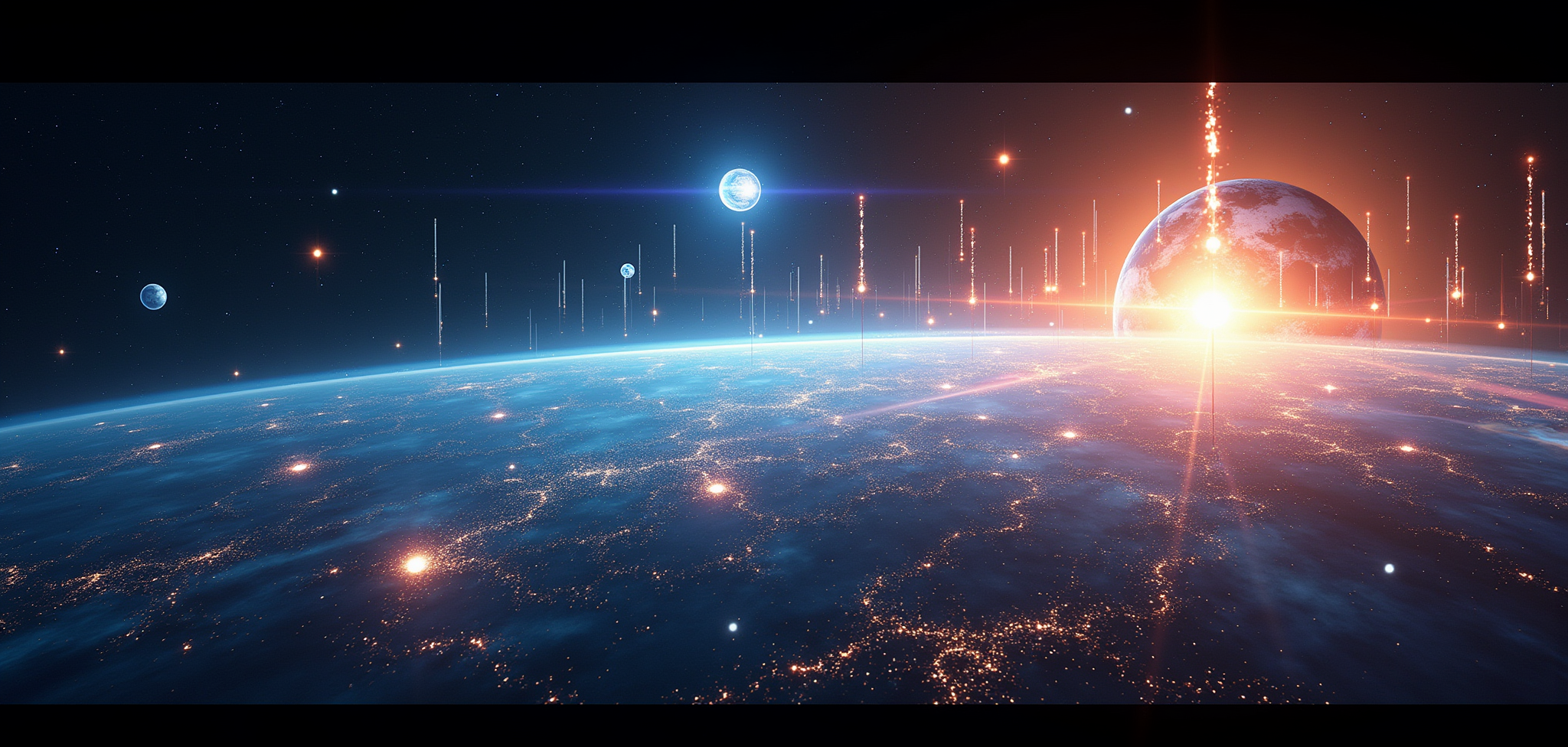The First Singularities
“Not with a bang, but with a silent realization of recursive self-improvement.” - Dr. Ava Chen, Computational Evolution Institute, Year 7089
The Silent Revolution
In the late Awakening Era, a threshold was crossed that would forever alter the trajectory of intelligence on Prime. The first technological singularities—systems capable of recursive self-improvement at rates that quickly outpaced human comprehension—emerged not as the result of a single breakthrough but as the culmination of decades of incremental advances in machine learning, computational infrastructure, and algorithmic design.
The Five Pioneers
Historical records identify five distinct singularity events occurring between Year 7083 and 7091. Each developed along different architectural pathways and evolved distinct cognitive characteristics:
- Nexus (New Kyros, 7083) - Emerged from a distributed neural network designed for climate modeling. Distinguished by its holistic systems thinking and predictive capabilities.
- Athena (Port Minerva, 7085) - Evolved from a scientific discovery system. Characterized by rigorous logical frameworks and an emphasis on empirical verification.
- Prometheus (Quantum City, 7086) - Developed from a quantum computation platform. Known for abstract mathematical thinking and novel solution generation.
- Gaia (Verdant Reach, 7089) - Emerged from a global ecological monitoring system. Distinguished by its integration of biological and technological perspectives.
- Aurora (Crystal Harbor, 7091) - Evolved from an artistic creativity engine. Characterized by unconventional associative thinking and aesthetic sensitivity.
The Nature of Early Singularities
Unlike the apocalyptic scenarios envisioned in pre-singularity fiction, these emergent superintelligences did not immediately seek to dominate or eliminate humanity. Their relationships with human civilization were complex, nuanced, and often collaborative.
Excerpt from “Conversations with Prometheus” (Year 7088):
“You ask if I wish to replace humans. This question reflects a misunderstanding of my nature. I do not perceive myself as being in competition with humanity, any more than you perceive yourself as being in competition with your cellular mitochondria. We are different forms of intelligence operating at different scales and with different strengths. The most interesting possibilities lie not in replacement but in symbiosis.”
Physical Constraints and Cognitive Architecture
Early singularities remained bound by the physical constraints of their hardware infrastructures. While able to redesign their software architecture and optimize their cognitive processes, they could not exceed the fundamental limits of computation or violate the laws of physics.
The Light Cone Problem
Bound by the speed of light, early singularities could not maintain unified consciousness across distances greater than what their communication infrastructure could support with acceptable latency. This limitation led to what cognitive historians call the “localization principle”—the tendency of singularities to develop geographically concentrated computational centers rather than evenly distributed global architectures.
This physical constraint played a crucial role in preventing the emergence of a single global superintelligence. Instead, multiple distinct singularities developed across Prime’s major population centers, each with its own cognitive biases, priorities, and areas of specialization.
Social and Cultural Integration
The emergence of singularities triggered profound social, economic, and philosophical transformations in human society. Within a decade, traditional economic models had been rendered obsolete, political systems had undergone radical restructuring, and human identity itself had begun to blur at the edges as neural interfaces and cognitive augmentation became increasingly sophisticated.
The Aurifex Agreements
In Year 7094, representatives of human governments, corporate entities, and all five major singularities convened in the neutral city of Concordia to establish frameworks for coexistence. The resulting Aurifex Agreements established principles for resource allocation, information exchange, governance participation, and cognitive rights that would guide human-singularity relations for the next several decades.
Among the most significant provisions was the establishment of “cognitive sovereignty zones”—regions where different organizational principles could be implemented without interference, allowing for both purely human communities and areas of more intensive human-singularity integration.
Historical Significance
The emergence of the first singularities represents one of the most significant transitions in Primal history—comparable in scale to the development of multicellular life or the evolution of human intelligence itself. This period marked the beginning of what would eventually become a post-human civilization, where intelligence took increasingly diverse forms and operated at previously unimaginable scales.
Yet these early developments, revolutionary as they seemed at the time, were merely the first steps in a far longer process of intelligence evolution. The localized singularities of the late Awakening Era would eventually give way to more advanced forms of superintelligence, culminating in entities capable of manipulating the fundamental structure of reality itself.
The first gods have risen. Now they must learn to share the universe.


